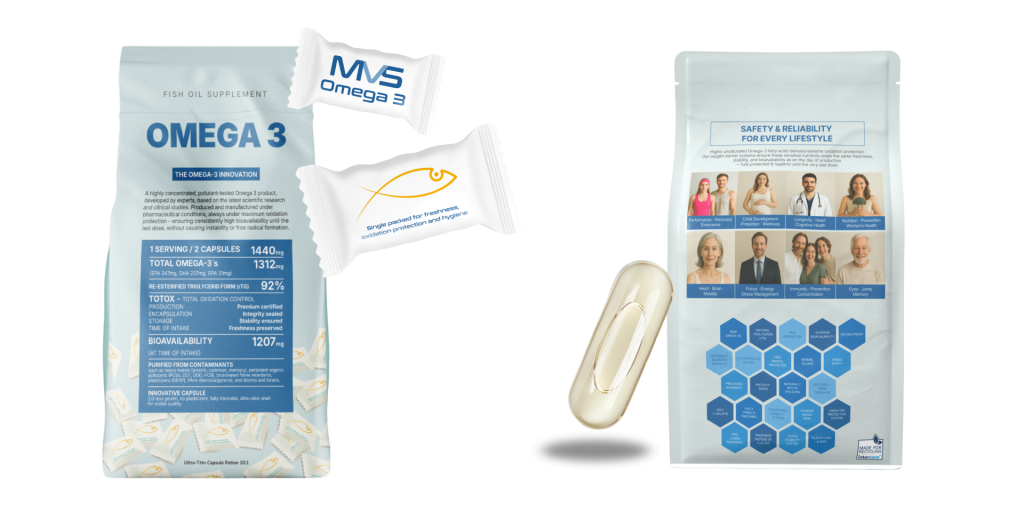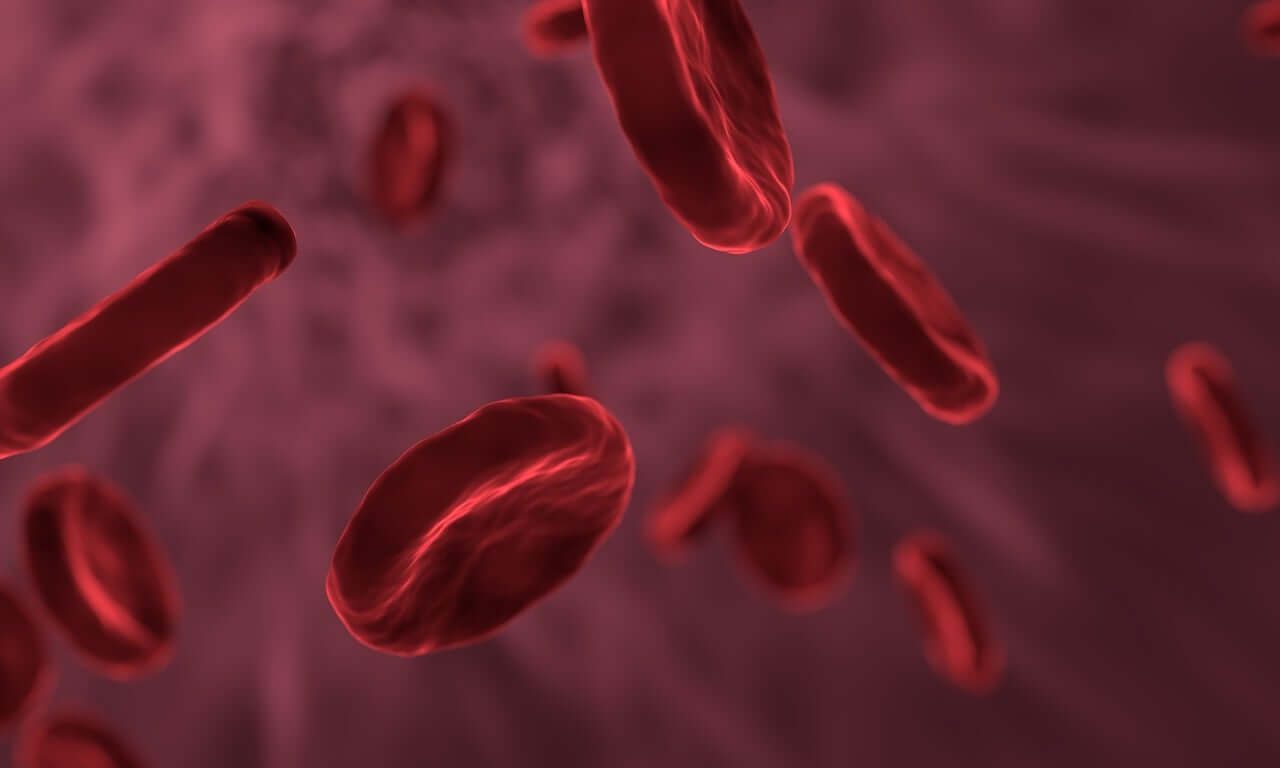Table of Contents
Omega-3 for blood pressure study published: Heart International, Vol. 2 No. 2, 2006 | Overview of the study created and cited by MVS Pharma GmbH
Introduction: Why Cardiovascular Health Still Demands Innovation
Understanding the Benefits of Omega-3 for Blood Pressure
Despite decades of medical advances, cardiovascular diseases (CVDs) remain the leading cause of death worldwide. Arterial hypertension is one of the most significant modifiable risk factors, with even mild blood pressure elevation increasing cardiovascular risk. While pharmaceutical treatments are available, not everyone benefits from or requires medication. As a result, dietary and lifestyle interventions — including omega-3 polyunsaturated fatty acid (PUFA) supplementation — are gaining prominence.
This review explores the biological and clinical implications of omega-3 polyunsaturated fatty acids (PUFAs), particularly eicosapentaenoic acid (EPA) and docosahexaenoic acid (DHA), in the management of blood pressure. Widely present in fish and fish oils, these PUFAs are known to support cardiovascular health and may moderately reduce blood pressure, an effect that is increasingly relevant in light of the global hypertension burden.
At MVS Pharma GmbH, we align rigorous scientific research with advanced product development. This article reviews the clinical role of omega-3 PUFAs, their mechanisms in blood pressure management, and how these insights directly shape the formulation and quality standards behind our MVS Omega 3 capsules.
The Clinical Role of Omega-3 PUFAs in Blood Pressure Control
Omega-3 PUFAs, particularly eicosapentaenoic acid (EPA) and docosahexaenoic acid (DHA), are essential fatty acids primarily found in fish and fish oils. Multiple clinical studies confirm their capacity to moderately lower both systolic and diastolic blood pressure, supporting heart health in both hypertensive and normotensive individuals.
Key findings include:
- Daily omega-3 intake (2–4g) reduced blood pressure by 2–6 mmHg.
- DHA demonstrated superior blood pressure-lowering effects compared to EPA.
- Long-term fish oil use may protect against hypertension-related organ damage.
Additionally, the use of PUFA supplements has recently received a large implementation even in fields unrelated to cardiovascular diseases, such as neurology (epilepsies), psychiatry (psychosis, severe depressions), rheumatology (osteoarthritis, psoriasis), clinical immunology (allergy), gastroenterology (inflammatory bowel diseases), nephrology (autoimmune nephropathies) (i.e.: chronic renal failure, congestive heart failure).
How Omega-3 PUFAs Work: Multi-Pathway Cardiovascular Benefits
Omega-3 fatty acids lower blood pressure via several well-documented mechanisms:
- Enhancing vasodilation by boosting nitric oxide (NO) and prostaglandin I2 (PGI2) production.
- Competing with pro-inflammatory omega-6 fatty acids, reducing vasoconstrictive compounds.
- Inhibiting angiotensin-converting enzyme (ACE) activity and decreasing angiotensin II formation.
- Lowering oxidative stress markers and activating the parasympathetic nervous system.
This multifactorial action improves arterial compliance and vascular function, factors essential for long-term cardiovascular protection.
Clinical studies cited include trials with dyslipidemic, diabetic, elderly, normotensive, and hypertensive patients, showing that daily supplementation of 2–4 g of omega-3 PUFAs modestly but significantly reduces systolic and diastolic blood pressure (by ~2–6 mmHg). DHA, in particular, showed greater efficacy than EPA in lowering blood pressure and heart rate. Long-term fish oil intake may also protect against hypertension-related organ damage.
*Note: However, not all studies were consistent—differences in dosage, EPA/DHA ratios, and population characteristics impacted outcomes. The review also raises safety concerns about oxidation of PUFAs and potential contamination of fish sources with mercury or other pollutants, recommending varied and moderate intake.
MVS Omega-3 — Setting a New Standard in Purity, Stability, and Bioavailability
Developed by MVS Pharma’s medical and pharmaceutical experts, MVS Omega-3 represents a new generation of scientifically designed Omega-3 supplements. With a 92% natural rTG structure, verified bioavailability of 1207 mg, and our proprietary T-TOX™ oxidation control system, it ensures exceptional purity, stability, and absorption. Each batch meets European Pharmacopeia standards and is tested for over 20 potential contaminants — setting a benchmark for transparency and trust in modern nutritional science.

Not all Omega-3 supplements are created equal. The more unsaturated and effective Omega-3 molecules become, the more sensitive they are to air exposure — making oxidation protection the single most critical factor for preserving both safety and bioavailability. Once oxidation begins, oil turns rancid, loses efficacy, and may even generate free radicals.
At MVS Pharma, this challenge defined our mission. We engineered MVS Omega-3 as a next-generation formulation designed for uncompromised purity, verified stability, and maximum biological usability.
Key Facts:
- Pharma-Standard Purification & Testing — each batch is verified to meet European Pharmacopeia standards and is screened for over 20 contaminants, including heavy metals, PCBs, dioxins, PAHs, and plasticizers.
- 90% Purified Omega-3 Concentration — delivering 1440 mg total oil with 1312 mg active Omega-3s (EPA 784 mg, DHA 518 mg) per serving.
- 92% Re-esterified Triglyceride (rTG) Form — structurally identical to natural fish oil for superior absorption (1207 mg bioavailable) and full physiological compatibility.
- T-TOX™ Total Oxidation Control System — exclusive German oxidation-management technology ensuring freshness and molecular integrity from production to the last capsule.
- Innovative Double Packaging — Individually Sealed Protection. Each capsule is individually sealed in an oxygen-free, double-wrapped container filled with argon gas. This advanced protective solution shields the sensitive Omega-3 oil from oxidation, light, and moisture — preserving the purity, stability, and freshness of each capsule until the very last dose.
- Ultra Thin Capsule Release 3.0™ — 2/3 less gelatin, no plasticizers, and >91% active ingredient load for transparency, purity, and optimized payload.
- Natural Tocopherol Matrix (α, β, γ, δ) — balanced antioxidant system calibrated to protect high-purity oil without destabilization.
The result is an ultra-pure, oxidation-protected Omega-3 supplement that maintains its natural structure, freshness, and full efficacy until the final dose — ensuring consistent support for cardiovascular, cognitive, visual, and immune health.
We believe in open, verifiable science. MVS Pharma publishes:
- Full fatty acid profiles
- Oxidation value reports
- Purity certifications
Our raw materials and processes are independently certified by Friend of the Sea and IFOS, ensuring transparency from ocean to capsule.
Conclusion: Nature, Evidence, and Technology Combined
This review affirms the cardiovascular benefits of omega-3 PUFAs — especially DHA — in managing blood pressure. Guided by this evidence, MVS Pharma GmbH has developed a high-bioavailability, oxidation-resistant, and contaminant-free omega-3 formulation tailored for cardiovascular health.
MVS Omega-3 embodies our philosophy: advancing health solutions where nature and science meet performance and safety.
Actionable Next Steps (for Readers)
- How much omega-3 should I take for blood pressure? – Consult your healthcare provider before starting any supplement.
- Choose omega-3 products with transparent certifications and oxidation controls.
- Incorporate omega-3-rich foods alongside supplements for holistic cardiovascular care.
- Follow MVS Pharma GmbH for research-backed health solutions.


